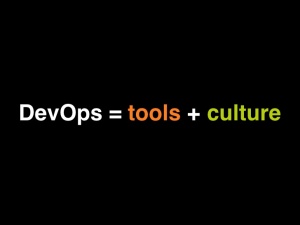
Why is the UK Government struggling with IT?
Recently I’ve had an insight into how the government is conducting it’s IT. It’s eye opening. If I had to sum it up, it’s like applying 1990’s approaches to current practices, but what does that mean, let me explain.
Many moon’s ago, the UK government decided it was not an IT specialist and that it should not be in the business of running IT. This lead to it outsourcing a lot of its core IT to often large organisations who on the whole I imagine did make it much more cost effective, most likely at the cost of efficiency. Fast forward and over the years there have been many changes to encourage open source technologies and agile methodologies no doubt to address these inefficiencies that have crept in. It was probably not predictable that if you out source it there’s no incentive for them to do it efficiently. Even now with the new technologies there’s mindset issues holding back on unlocking the benefits to a DevOps style approach.

What do I mean by a DevOps style approach? I mean that people should be encourage to use evidence to drive decisions, Automate the process, be encouraged to fail and measure the results against expectations. Based on what I’ve been able to observe over 2 months there’s a number of issues stopping the deliver of true efficiency and agility.
- Lack of technical management
- Too many consultant / IT outsourcing companies
- Mentality and approach barriers
Let’s tackle the causes of these and how to fix them one at a time.
1, Due to the outsourcing approach and the ideal that government does not do IT the technical decisions are being made by people in the government who are not adequately having the problem explained to them. This is happening because the consultancies do not wish to harm their business by being seen as being ‘difficult’ or by saying “No” to release schedules. This also does not allow for a clear strategy to be defined for the entire department to work towards as there is not central guidance for the consultancy groups to adhere too. In 2 months I have not met anyone who is in technology within the department I’m working that is a position above me.
2, Due to the preference these days to use small consultancies and to bring in subject matter experts in various fields there is a lack of cohesion between styles and approaches to delivery. Everyone is pulling in slightly different directions, this is made worse by the lack of central technical leadership which is why it is the biggest problem that needs fixing.
Stop trying to change things
3, I am not lying when I say I have been told every week for 8 weeks “Stop trying to change things”. There is a culture that has developed where if you speak out you are seen as difficult. If you suggest improvements that require sign off or budget it does not happen because people are scared to approach the subject as they will have to justify how it speeds up delivery, no one cares about cost savings or efficiencies. People can and will change their outlook when it can be evidenced that change is benefiting the process but that requires point 1 again, good leadership and the ability to explain back reasons why fixing things up is worth while.
I’m not saying this is easy, there are payment deadlines that need to happen. It was pointed out to me that when it comes to government if it says it is going to do it it really must, no if’s or buts. Any failure is political canon fodder and the general public are entirely scathing when things don’t happen on time. This makes it harder than it would typically be, however, not impossible.
As a UK taxpayer I’m utterly shocked at how bad it really is, I had suspicions based on what I’d heard or read but I wasn’t expecting people to be so worn down and unwilling to change or for the consultancies to be so scared of speaking up but I guess when you have a revenue stream dependant on the government you wouldn’t want to cut that off. I guess ultimately my concern is that new technology will be implemented without fixing the root cause of the issue, the culture and organisation. No doubt if anyone was to read this of any power they would insist they have checks and measures are in place to ensure this can not happen, the reality is the people deciding are not qualified to know if it is a good deal or not.




